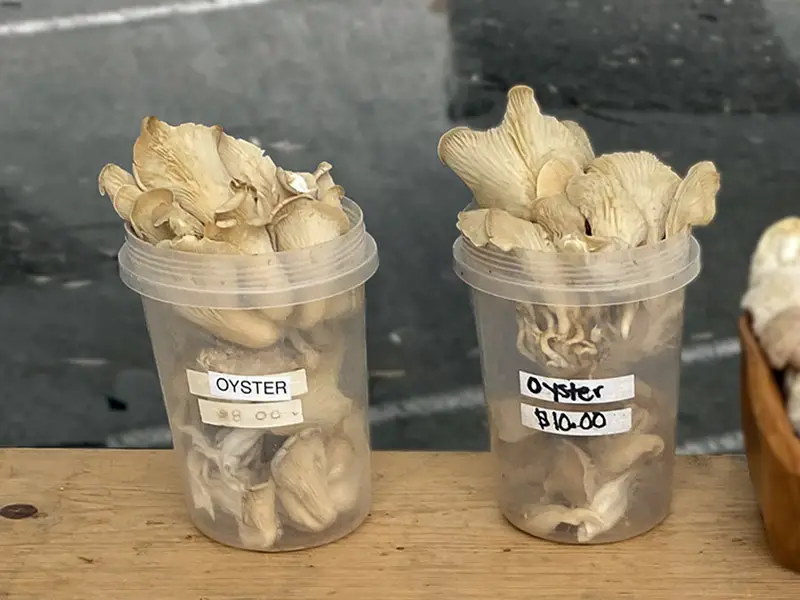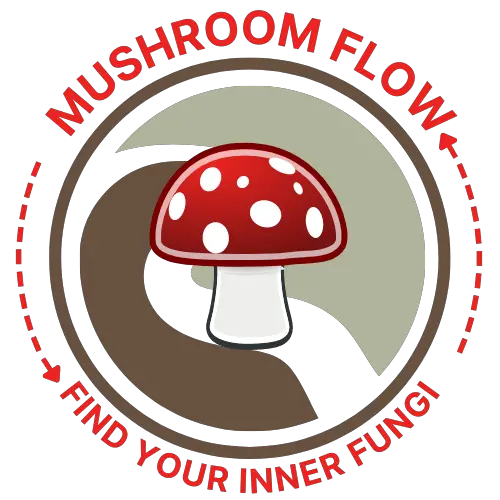During my weekly farmer’s market visit, I was shocked at how much more expensive oyster mushrooms are compared to other types of mushrooms. In fact, they are one of the more expensive mushrooms on the market. You may be wondering, why should you spend so much on oyster mushrooms?
Oyster mushrooms are more expensive due to increasing demand combined with challenging cultivation. Oyster mushrooms require a sterile environment, and pasteurized substrate, with ideal temperature, humidity, and light. It can take from 2 to 6 weeks to grow and harvest oyster mushrooms.

While this explains why oyster mushrooms are expensive, what other benefits do they offer, how do they compare to other culinary mushrooms and affordable alternatives? Let’s take a closer look.
Why Are Oyster Mushrooms More Expensive Than Other Mushrooms?
The oyster mushroom’s widespread popularity speaks for itself. Out of the thousands of varieties of fungi that have been identified, they are one of the most coveted for their delicious taste. In addition to fabulous flavor, oyster mushrooms are one of the most nutritious with significant amounts of potassium, iron, and vitamins D, B2, and B6.
There are hundreds of types of oyster mushrooms with five more common edible varieties: golden oyster, pink oyster, blue oyster, king oyster, and pearl oyster.
Gourmet oyster mushrooms can sell for $8 per pound wholesale and $12 per pound at grocery stores and farmer’s markets. At the local farmer’s market, I bought a bunch of yellow oysters for $10, which when cooked was reduced to a single portion. After that overpriced purchase, I ordered my own grow kit to avoid paying a premium and have enough to cook for a family-sized meal.
Looking for an easy way to grow mushrooms at home? Check out these fun grow kits on Amazon.
You can also grow oyster mushrooms without a grow kit. First, you’ll need to purchase spores or collect your own from an oyster mushroom cap. Next, the spores should be added to a liquid culture (sugar-based liquid). Then, with the liquid culture in a syringe, innoculate a bag of sterilized grain.
Or you can skip all of the above steps and purchase ready-made grain spawn. Finally, mushrooms require a growth substrate to thrive which can be grain, cardboard, straw, or sawdust. The substrate may also require sterilization and humidity for the mushrooms to grow.
As a result, oyster mushrooms ideally need a grow room to flourish so you can control all variables such as temperature, humidity, and light. We’ll cover mushroom cultivation in a separate post, for now, let’s learn where to find oyster mushrooms.
Where Can I Find Oyster Mushrooms?
Due to their popularity, you can find oyster mushrooms at most grocery stores and farmer’s markets today. You can even buy these fresh or dried mushrooms online from many health food websites.
Big chain stores such as Walmart, Target, and Amazon conveniently carry oyster mushrooms. Oyster mushrooms are also incredibly popular and widely available at local Asian grocery stores.
Wild oyster mushrooms are typically ready in the fall, but commercially harvested oyster mushrooms are available year-round. You can always count on your local farmer’s market to supply you with the freshest mushrooms.
Mushroom farmers cultivate oyster mushrooms all year in their controlled environments and you can also find dried oysters in most grocery markets year-round.
We suggest purchasing and consuming fresh oyster mushrooms as opposed to dried mushrooms for the best experience. You will get the best taste for the price you will pay with fresh fungi. It’s also recommended to cook oyster mushrooms, rather than consuming them raw.
How To Store Your Oyster Mushrooms
Now that you’ve purchased your oyster fungi, you will want to take proper care of them to have long-lasting mushrooms. The most important step for storing your mushrooms is to keep them in the refrigerator. Refrigerate fresh oyster mushrooms in a paper bag or a paper towel for 5-7 days.
You may also freeze or dehydrate your oyster mushrooms to use at a later time. This is a good idea when buying in bulk. If you choose to freeze your oyster mushrooms, we recommend wrapping them in a paper towel and then placing them in a plastic or paper bag.
Which Mushroom is similar to Oyster Mushrooms?
You may be wondering, which other mushrooms are great oyster alternatives and what are the price comparisons.
Shiitake Mushrooms
If you are looking for a related taste, then shiitake mushrooms are your next oyster mushroom alternative.
Shiitake mushrooms are the most similar to oyster mushrooms and resemble oysters in both appearance and taste. Shiitake are similarly priced compared to oysters and brown, umbrella-shaped fungi. The bold flavor of shiitakes makes for a tasty replacement mushroom.
Portobello Mushrooms
Portobellos are one of the biggest mushrooms on the market. They are also significantly cheaper than oyster mushrooms. You can differentiate the two fungi from their caps. Portobellos have a big, smooth, brown-colored cap whereas oyster mushrooms are much smaller and have many smooth caps.
You can likely find these mushrooms year-round, making them a reliable alternative to oysters.
Button Mushrooms
Also known as creminis or baby bellas, button mushrooms are a favorite replacement for oyster mushrooms. They have medium firm flesh and are commercially produced on a large scale, so you can always find them in your local market at affordable prices.
They can be cooked in several ways and add a special flare to most dishes. When oyster mushrooms aren’t available, buttons will most likely get the job done.
Here’s a quick comparison of the types of fresh mushroom alternatives to oysters and their relative prices.
| Mushroom Variety | Flavor and Texture | Approximate Cost / Pound |
| Oyster Mushrooms | Mild, briny flavor; medium texture | $8-$12 |
| White Button Mushrooms | Mild flavor; medium texture | $3-$5 |
| Crimini (Baby Bella) Mushrooms | Earthy flavor; firm, meaty texture | $6-$8 |
| Enoki Mushrooms | Delicate flavor; crispy texture | $4-$6 |
| Portobello Mushrooms | Rich flavor; meaty texture | $6-$8 |
| Shiitake Mushrooms | Delicate, umami flavor; medium texture | $12-$14 |
| Maitake (Hen of the Woods) | Woodsy flavor; wispy, firm texture | $12-$16 |
| Morel Mushrooms | Rich, nutty, meaty flavor | $30-$50 |
Oyster Mushroom Breakdown
Oyster mushrooms are more expensive than some other mushrooms, but they are worth it. The rich taste and cooking versatility of these mushrooms make them a crowd favorite. Although they average $8-$12 per pound their gourmet status can help to justify their higher prices.
Incorporating oyster mushrooms into your next stir fry will give you your daily dosage of potassium, iron, and vitamins D, B2, and B6. When you pay a higher price for oyster mushrooms, you should keep in mind that you are paying for the harvest time and resources, such as the substrate, it takes to successfully grow these lovely fungi.
